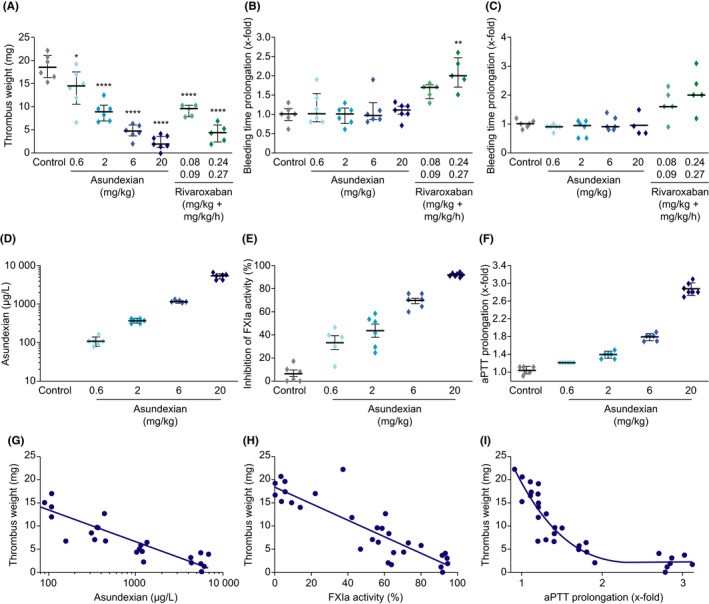FIGURE 2.

Effects of asundexian versus rivaroxaban on thrombus weight following FeCl2‐induced damage to the carotid artery (A), ear bleeding time (B), and gum bleeding time (C) in rabbits. Plasma concentrations of asundexian (D), inhibition of FXIa activity (E), and APTT prolongation (F) according to asundexian dose, and correlation of plasma concentrations (G), inhibition of FXIa (H), and APTT prolongation (I) with thrombus weight. Asundexian was administered as an intravenous bolus, whereas rivaroxaban was administered as an intravenous bolus followed by continuous infusion. Results are presented as individual values and median with 25th and 75th percentiles (Parts A–F). * P < .05, *** P < .001. APTT, activated partial thromboplastin time; FXIa, activated coagulation factor XI
